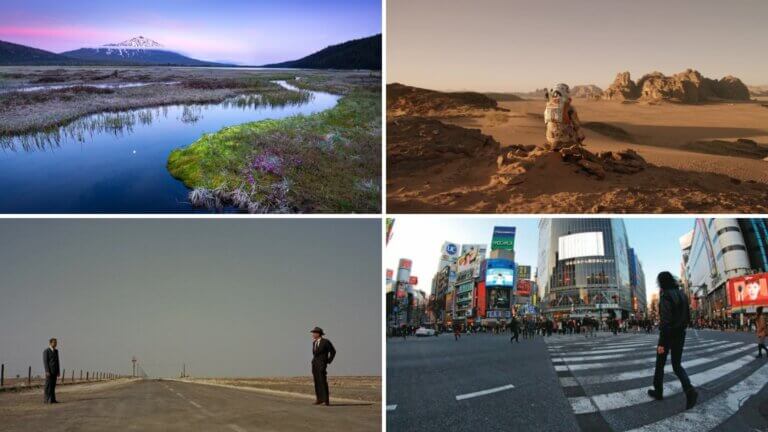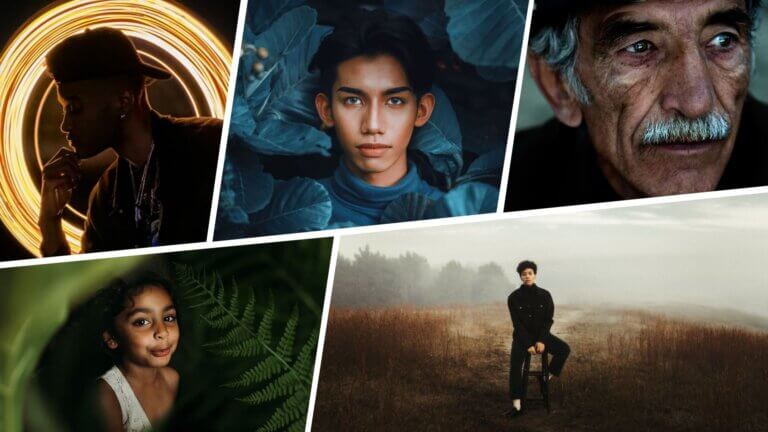Literary devices aim to utilize words to communicate more efficiently and more effectively to readers and audiences. In this article, we’ll be taking a look at a literary device that aims to do just that simply by using the same word or phrase again and again. This is of course repetition. Repetition may seem straightforward, but there are various types of repetition that are defined by how and where words or phrases are repeated. So, what is repetition actually used for? Let’s take a look at those types of repetition and how iconic writers have used them throughout history. Continue reading What…
One of the best ways for filmmakers to visually create a cohesive and intentional film tone is through lighting. The best cinematographers in the industry have a great understanding of the relationship between lighting and story. High key lighting has a long history in the world of film and television for both logistical and artistic reasons. While there may be some debate to the effectiveness of high key lighting versus more dynamic lighting techniques, it may surprise you to know that one of the pioneers of dramatic, low-key lighting also pioneered the use of high key lighting in television. Who is…
The benefits of using a wide angle camera lens can be found in the work of some of the best filmmakers from Steven Spielberg to Roman Polanski to Stanley Kubrick. What is a wide angle lens used for? The answer to that varies. Wide angle lenses can create visual and psychological effects depending on how they are used. Understanding these different effects is a great way for any filmmaker to learn how to make a scene more immersive. Before we dive into when to use a wide angle lens in film, you may be wondering “What is a wide angle…
Special effects in film are a crucial component of modern movie-making. They have the power to transport audiences to fantastical worlds, create realistic portrayals of historical events, and add an emotional depth that enhances storytelling. In this article, we will explore what special effects are in film, the different types of special effects that exist, their history in cinema, and their impact on modern-day filmmaking.Continue reading What are Special Effects in Movies — History & Types Explained
Portraits existed long before the invention of photography. Far before there was a camera even to take a photograph, rulers and monarchs hired painters to paint their own portraits. Today, portrait photography has taken the place of this tradition.Continue reading What is Portrait Photography — Types, Styles, Concepts & More
A soliloquy has the power to give an audience a direct channel into a character's innermost thoughts and emotions. This monologue, delivered alone on stage, whispers directly into the audience's ear, offering an intimate glimpse into the character's psyche. Let’s look deeper on how the best soliloquies have impacted larger stories.Continue reading What is a Soliloquy — Definition and Examples
We've all heard the saying "Work smarter, not harder." One of the best ways to achieve this goal is through effective task management. Task management aims to streamline and organize all the tasks that need to be completed by an individual or a team. It involves prioritizing, planning, scheduling, and tracking tasks to achieve specific goals. This guide will look into the importance of task management and a few ways to improve your own task management skills.Continue reading What is Task Management — Definition & Steps Explained
Mastering the English language can be both a rewarding and challenging endeavour, and the key to this journey is understanding the basic building blocks of sentences. One such fundamental concept is the independent clause. Continue reading What is an Independent Clause — Grammar Basics Explained
Adependent clause, a foundational element of grammar, may initially seem complex but can be easily understood with a bit of explanation. It's importance cannot go understated: a dependent clause is an essential building block of any sentence. Continue reading What is a Dependent Clause — Grammar Basics Explained
The Kanban board has solidified its role as a powerful tool for optimizing workflow and enhancing team collaboration across industries. Originating from Toyota's manufacturing process in the 1940s. The name "Kanban" originates from two Japanese words: “Kan” 看, which means sign, and “Ban” 板, meaning board. Since then, this system has evolved as it has been heavily integrated into various industries from software development to sales to video production. Continue reading What is a Kanban Board — Types & Processes Explained
















